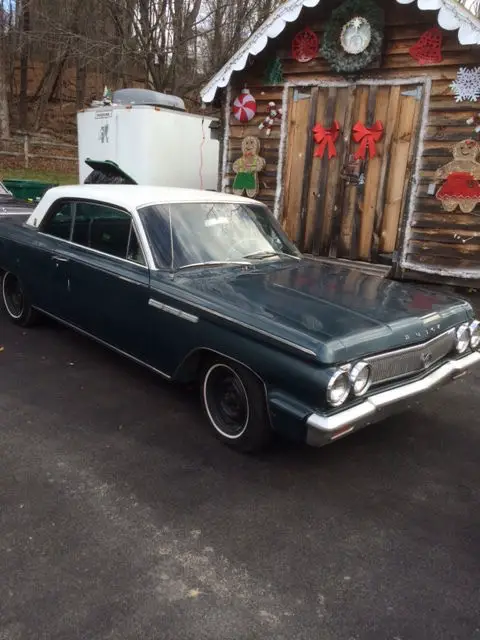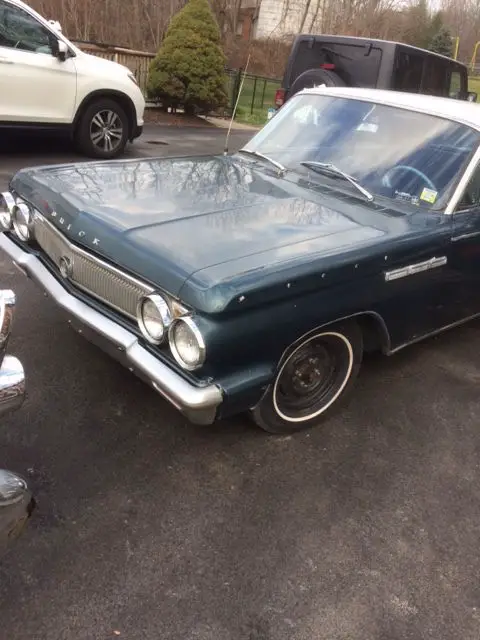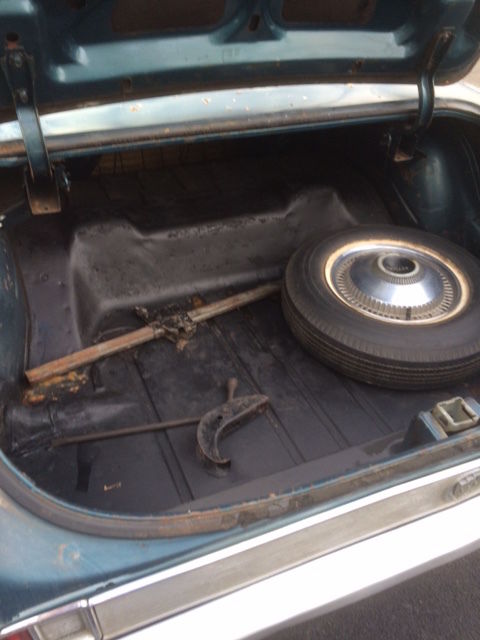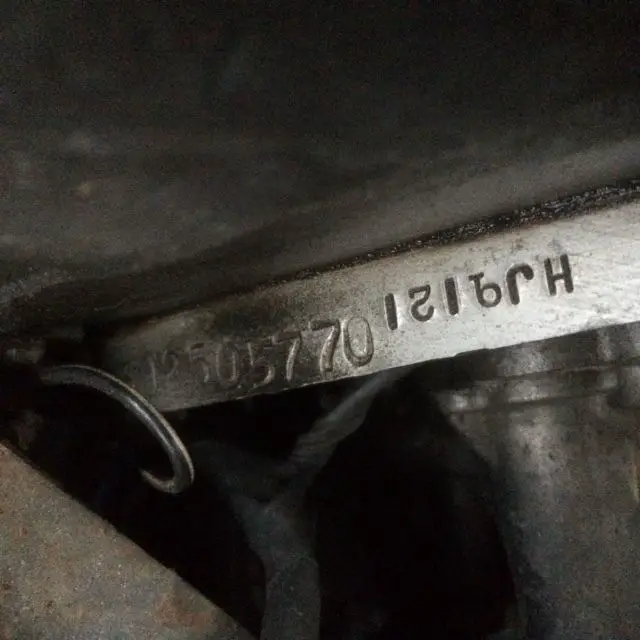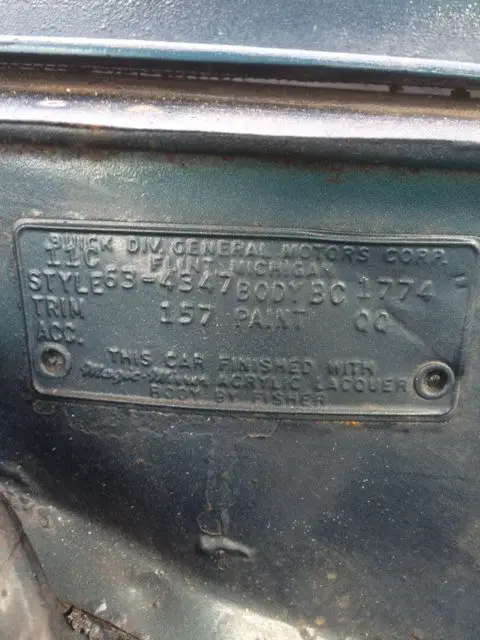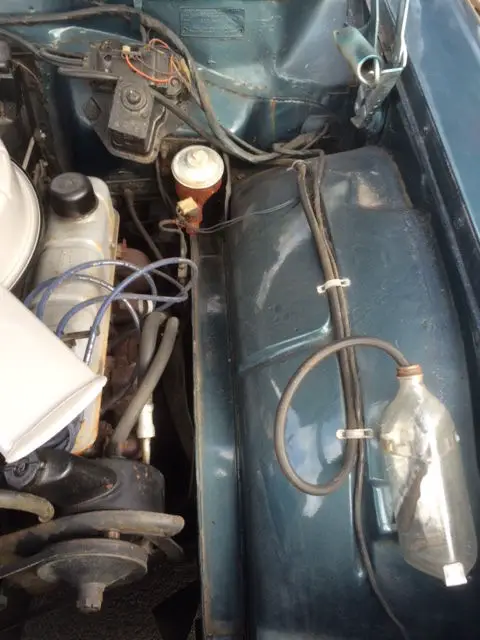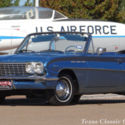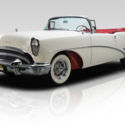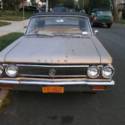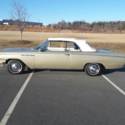1963 Buick Skylark VERY RARE 215 C.I. V-8 Fireball Aluminum engine NO RESERVE
| Make: | Buick |
| Model: | Skylark |
| Type: | Hardtop |
| Trim: | Base Hardtop 2-Door |
| Year: | 1963 |
| Mileage: | 95,000 |
| VIN: | 3J2505770 |
| Color: | Teal |
| Engine: | 3.5L 3528CC 215Cu. In. V8 GAS OHV Naturally Aspirated |
| Cylinders: | 8 |
| Fuel: | Gasoline |
| Transmission: | Automatic |
| Drive type: | U/K |
| Interior color: | Teal |
| Vehicle Title: | Clear |
| Item location: | Poughkeepsie, New York, United States |
1963 Buick Skylark Additional Info:
NO RESERVE!1963 Buick Skylark Coupe 215 CI V-8 200 hp.
All original drive train. VIN number on block.
Own part of automotive history!
Two door hard top. 215, 00HP, barrel, 8 2-speed automatic. Car runs very good. The engine, ranny and rear are all original to the car.
Will consider trades for Aurora T-jet and/or AFX collection. I want quality over quantity. No junk yards.
The engine bay shows no rust and is in really good condition for over 50 years old. The trunk also is in extremely good shape with no rust or rust holes. I provided pictures of the underside. You can judge for yourself whether you think it's good condition or not. It seems as though the car is the original color combination of aqua/white, ut I can tell it's not the original paint.
The body is straight, nd I can't find any body filler. It passed the magnet test. The trunk is in very good condition.Comes withoriginal spare tire and jack. The interior needs complete restoration. I believe this car is aexcellent candidate for a high dollar restoration. The tires seem to be in good condition. The car is sold as is.
I have the clear title in my hand, nd the car is sold as is.
NADA ValuesPrintOriginal
MSRPLow
RetailAverage Retail Value
This vehicle would be in good condition overall. It could be an older restoration or a well-maintained original vehicle. Completely operable. The exterior paint, rim, nd mechanics are presentable and serviceable inside and out. A ‘20-footer’." >Average
RetailHigh Retail Value
This vehicle would be in excellent condition overall. It could be a completely restored or an extremely well-maintained original vehicle showing very minimal wear. The exterior paint, rim, nd mechanics are not in need of reconditioning. The interior would be in excellent condition.
Note: This value does not represent a '100 Point' or '# 1' vehicle *.
* '100 Point' or '# 1' vehicle is not driven. It would generally be in a museum or transported in an enclosed trailer to concours judging and car shows. This type of car would be stored in a climate-regulated facility." >High
Retail
| Base Price | $2,857 | $5,525 | $9,500 | $16,800 |
| Options:(add) | ||||
| TOTAL PRICE: | $2,857 | $5,525 | $9,500 | $16,800 |
Hagerty Current Values
- $21,300#1 Concours
- $14,500#2 Excellent Condition
- $8,300#3 Good Condition
- $3,800 #4 Fair Condition
GM experimented with aluminum engines starting in the early 1950s.Alcoa(Aluminum Company of America) was pushing all automakers to use more aluminum. An early-development supercharged version of the 215-cubic-inch (3.5L) V8 was used in the 1951Le Sabreconcept car,[2]and the 1953 Buick Roadmaster concept car, nd work on a production unit commenced in 1956. Originally intended for 180-cubic-inch (2.9L) displacement, uick was designated by GM as the engine design leader, nd decided to begin with a larger, 15-cubic-inch (3.5L) size, hich was deemed ideal for the new "senior compact cars" introduced for the 1961 model year. This group of cars was commonly referred to as the "B-O-P" group — for Buick-Olds-Pontiac — or theY-bodies.
Known variously as the Fireball and Skylark by Buick (and as Rockette, utlass, nd Turbo-Rocket by Oldsmobile),[3]the 215 had a 4.24in (108mm) bore spacing, bore of 3.5in (89mm), nd a stroke of 2.8in (71mm), or an actual displacement of 215.5cuin (3,531cc). At the time the engine was the lightest mass-production V8 in the world, ith a dry weight of only 318lb (144kg). Measuring 28in (71cm) long, 6in (66cm) wide, nd 27in (69cm) high (same as thesmall-block Chevy),[4]it became standard equipment in the 1961Buick Special.
Oldsmobile and Pontiac each used an all-aluminum 215 on its mid-sized cars, heOldsmobile F-85,CutlassandJetfire, ndPontiac TempestandLeMans. Pontiac used the Buick version of the 215; Oldsmobile had its own. The Oldsmobile version of this engine, lthough sharing the same basic architecture, ad cylinder heads and angled valve covers designed by Oldsmobile engineers to look like a traditional Olds V8 and was produced on a separate assembly line. Among the differences between the Oldsmobile from the Buick versions, t was somewhat heavier, t 350lb (160kg). The major design differences were in the cylinder heads: Buick used a 5-bolt pattern around each cylinder where Oldsmobile used a 6-bolt pattern. The 6th bolt was added to the intake manifold side of the head, ne extra bolt for each cylinder, eant to alleviate a head-warping problem on high-compression versions. This meant that Oldsmobile heads would fit on Buick blocks, ut not vice versa. Changing the compression ratio on an Oldsmobile 215 required changing the heads, ut on a Buick 215, nly the pistons, hich was less expensive and simpler. For that reason, he more common Buick version (which looks like a traditional Buick vertical valve cover 'nailhead' V8) has today also emerged as more desirable to some. But the Olds wedge-shaped/quench combustion chambers/pistons are more compatible with modern low-octane/low-lead motor fuels than the Buick 'hemisperical'-shaped combustion chambers and domed pistons. Later Rover versions of the aluminum block and subsequent Buick iron small blocks (300 with aluminum, hen iron heads, 40 and 350 with iron heads) went to a 4-bolt-per-cylinder pattern.
At introduction, uick's 215 was rated 150hp(110kW) at 4400rpm. This was raised soon after introduction to 155hp (116kW) at 4600rpm. 220lb·ft (298N·m) oftorquewas produced at 2400rpm with aRochester2GC (DualJet) two-barrelcarburetorand 8.8:1compression ratio. A mid-year introduction was the Buick Special Skylark version, hich had 10.00:1 compression and a four-barrel carburetor, aising output to 185hp (138kW) at 4800rpm and 230lb·ft (312N·m) at 2800rpm.
For 1962, he four-barrel engine increased the compression ratio to 10.25:1, aising it to 190hp (140kW) at 4800rpm and 235lb·ft (319N·m) at 3000rpm. The two-barrel engine was unchanged. For 1963, he four-barrel was bumped to 11:1 compression and an even 200hp (150kW) at 5000rpm and 240lb·ft (325N·m) at 3200rpm, respectable 0.93hp/cuin (56.6hp/L).
Unfortunately, he great expense of the aluminum engine led to its cancellation after the 1963 model year. The engine had an abnormally high scrap ratio due to hidden block-casting porosity problems, hich caused serious oil leaks. Another problem was clogged radiators from antifreeze mixtures incompatible with aluminum. It was said that one of the major problems was because the factory had to make extensive use of air gauging to check for casting leaks during the manufacturing process and was unable to detect leaks on blocks that were as much as 95% complete. This raised the cost of complete engines to more than that of a comparable all cast-iron engine. Casting-sealing technology was not advanced enough at that time to prevent the high scrap rates.
The Buick 215's very high power-to-weight ratio made it immediately interesting for automotive and marine racing.Mickey Thompsonentered a stock-block Buick 215-powered car in the 1962Indianapolis 500. From 1946-1962, here had not been a single stock-block car in this race series. In 1962, he Buick 215 was the only non-Offenhauserpowered entry in the field of 33 cars. Rookie driverDan Gurneyqualified eighth and raced well for 92 laps before retiring with transmission problems.
Surplus engine blocks of theOldsmobile F85(6-bolt-per-cylinder) version of this engine formed the basis of the Australian Formula OneRepcoV8 used byBrabhamto win the1966Formula One world championship, lthough only the earliest engines had any Oldsmobile components. The majority of Repco RB620 engines were cast and built in-house at Repco.
Rights to these engines were purchased by the BritishRover Companyand used in the 1967Rover P5Bthat replaced the 3L straight six Rover engined P5. Throughout the years, he Rover Co., hich became part ofBritish Leylandin 1968, nd its successor companies constantly improved the engine making it much stronger and reliable. Capacities ranged from 3.5-5.0L (215 to 307in³). This engine was used for V8 versions of the MGB-GT known as theMGB GTV8. This came straight from the MG works at Abingdon-on-the-Thames. Rover also used the engine in the 1970Range Roverwhich saw the engine successfully returning to the USA after the Range Rover's 1986 introduction. American Buick 215s have also beenengine swappedinto countless other platforms, speciallyChevrolet Vegasand later British carsMG sports carsincluding the MG RV8 in the 1990s,TriumphTR8, nd various sports sedans and sports cars by theMG Rover Groupand specialist manufacturers such asTVRand theMorgan Motor Company. The engine remains well-supported by enthusiast clubs, pecialist parts suppliers, nd by shops that specialize in conversions and tuning.
The 215 was also used in the Italian-American gran turismoApolloin 1962-1963, s well as in the Asardo 3500 GM-S show car.
Although dropped by GM in 1963, heRover V8 engineremained in production use for more than another 39 years, ven longer on the aftermarket. GM tried to buy it back later on, ut Rover declined, nstead offering to sell engines back to GM. GM refused this offer.
In the mid-1980s,hot roddersdiscovered the 215 could be stretched to as much as 305cuin (5l), sing the Buick 300crankshaft, ew cylinder sleeves, nd an assortment of non-Buick parts.[5]It could also be fitted with high-compressioncylinder headsfrom theMorgan Plus 8. Using the5 liter Roverblock and crankshaft, maximum displacement of 317.8cuin (5,208cc) is theoretically possible.[6]
I have described the car the best I can. Please ask questions. If you need more pics just let me know. Iencourage you to inspect the car to make sure you are very happy with your purchase. Thank you.
